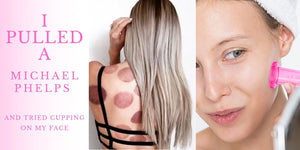 The latest medical treatment to make it big in mainstream athletic therapy is here: cupping. Like the acupuncture and kinesiology tape that came before it, cupping is the most recent craze to sweep the sports world, with both the New York Mets and Olympic gymnast Aly Raisman currently having embraced the treatment.
The latest medical treatment to make it big in mainstream athletic therapy is here: cupping. Like the acupuncture and kinesiology tape that came before it, cupping is the most recent craze to sweep the sports world, with both the New York Mets and Olympic gymnast Aly Raisman currently having embraced the treatment.
Cupping is an ancient practice that is used regularly in the world of athletic therapy. First used in antiquity, and retaining its popularity many centuries later, the cupping process is like no other in athletic therapy. During the treatment, suction cups are applied to the skin in order to aid blood flow. When they are removed, large circular welts,similar to hickeys, remain on the skin wherever the cups were placed. “Cupping can be applied either dry or wet,” explain therapists Erin Brooks and Ed Ratz.“ [In] dry cupping, cups are applied to one location and remain there for a number of minutes. Wet cupping… is applied over an area of tissue restriction with the aid of massage oil or lotion.”
Brooks and Ratz, therapists at the David L. MacIntosh sport medicine clinic, weighed in on the pros and cons of cupping, explaining that the therapy is used for a number of different sports related injuries. “Often, [cupping] is used in sport when dealing with tissue adhesions, congestion of fluid, and [also] aids in local movement of tissue fluid.” The pair adds that by promoting movement of tissue fluid, cupping can reduce sub-acute hematomas, which are linked to traumatic brain injuries.
Although the therapy has been known to result in dramatic, instantaneous results, cupping is not for everyone, and there are different conditions that can prevent an individual from receiving the therapy. “As with any type of therapy, there are contraindications to the treatment,” they explain. “You would avoid using [cupping] on patients with diabetes, congestive heart failure, kidney dysfunctions, blood clotting disorders, or medications that reduce blood clotting, and open wounds.”
If you fit the criteria for cupping, the treatment could be of use in rehabbing many sports related injuries like joggers heel (plantarfasciitis) or hamstring strains. Otherwise, cupping has been known to help alleviate back pain and increase circulation. Cupping is also used as a way to relieve stress — making it an ideal way for exam packed students to unwind and relax.
So for those who are brave enough — and who don’t mind sporting octopus-sized hickeys on their skin for days — cupping should be a welcome addition to rehab, and can help get you back into the game.
Credits: Dora Akcay. Reprinted with permission from www.thevarsity.ca






